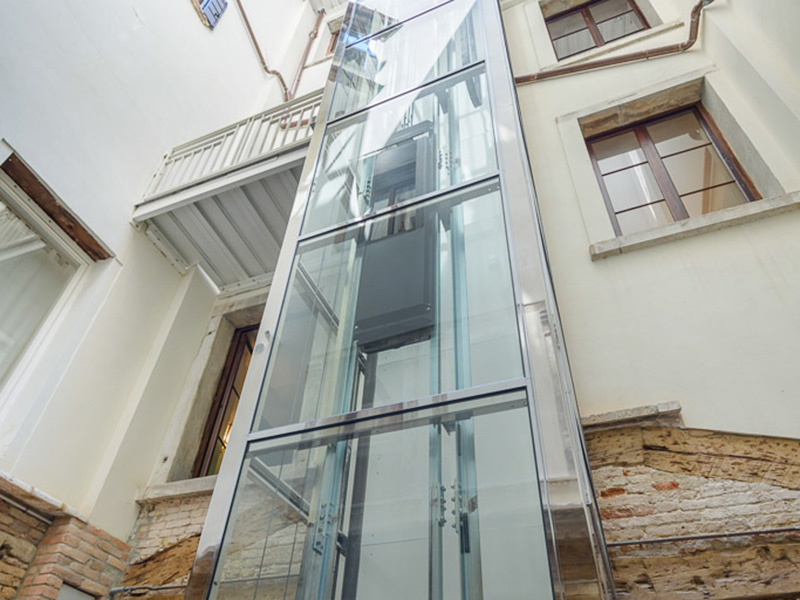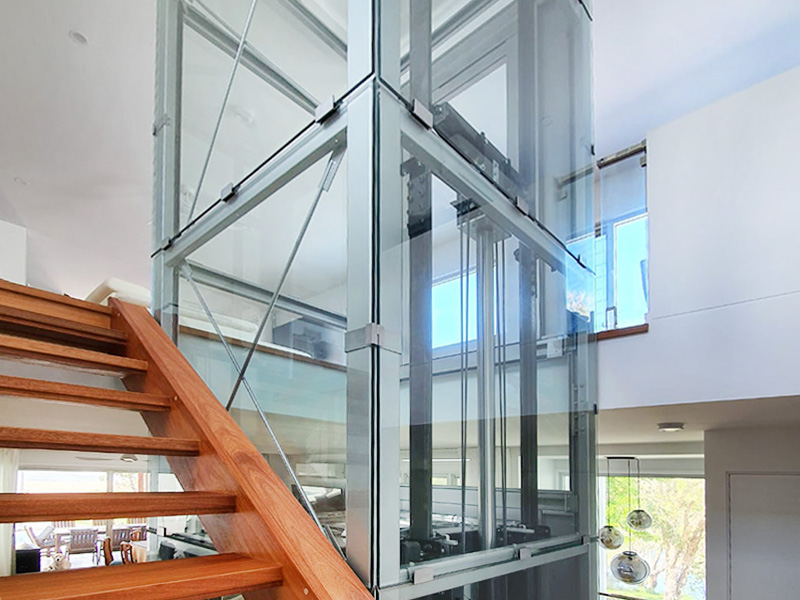Installing a lift in an apartment block or a building is often a crucial necessity. However, many people are frightened by the quotations that specialised companies might propose. The secret lies in choosing a solution that is appropriate for your building. Here is how to optimise the cost of the lift.
Vertical mobility is an increasing need in most apartment buildings. Architectural barriers worsen the quality of life, especially for people with reduced mobility. But that’s not all: they also complicate life for owners of shops or activities open to the public that may be present in the building (clinics, bed and breakfasts, offices, etc.).
This is why requesting a quote to install a lift is fundamental. But what can you do if the price is too high?
Homelifts: the ideal solution for small buildings
Homelifts are not miniature lifts, but rather systems specifically designed for small apartment buildings. They have a much lower cost, a maximum speed of 0.15 metres per second, a simplified and faster installation, and do not require special building permits (if built indoors).
With a homelift, therefore, you can make the most of all spaces and optimise overall expenditure. The total cost of the installation, which also includes the average annual consumption, is strongly influenced by the type of use. Accordingly, you can choose between the two main types of homelifts: electric and hydraulic. Let’s see which is more convenient for your needs.

Electric homelift

Hydraulic homelift
Electric lift: when it pays off
Electric homelifts are the more traditional one: a winch driven by electricity moves the cabin to the desired height. In this case the installation cost will be slightly higher than average, but consumption is significantly reduced over time. This is type of installation is ideal for all those places where the lift is frequently used.
Hydraulic lift: when it pays off
The hydraulic lift is a much leaner installation, as it does not feature a winch or counterweight. Thanks to a system of pneumatic cylinders, the lift will move effortlessly between floors. In this case, the installation cost is lower, but consumption may be higher over time. This is why this system is perfect for small homes, when the average use does not exceed ten or twenty rides per day. Finally, it must be considered that the hydraulic system, fitting into very small spaces, does not require additional building work, such as knocking down walls.
Always consider the maintenance factor
When installing a homelift, one must necessarily think in the long term. The benefits and costs must be spread over a long period of time. That is why you must also think about average maintenance costs. As a general rule, one should accept the quote of the company that is most able to make regular maintenance cost-effective.
Electric technology, in this circumstance, is cheaper on subsequent interventions. Hydraulic technology, on the other hand, does not require periodic checks, but – ten years after the installation of the system – the pipes through which the oil flows must be changed. This is why it is so important to weigh up the pros and cons of each alternative.